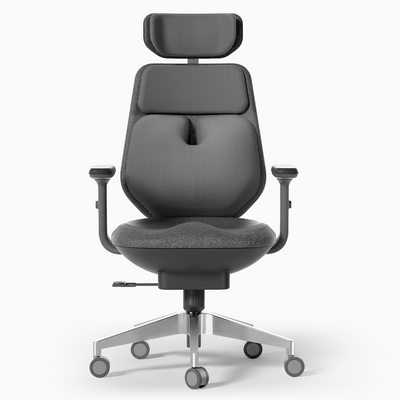
Cold Plunge Temperatures: How Cold Should It Really Be?
Introduction to Cold Plunges
Cold plunges, also known as ice baths, have been gaining immense popularity among athletes, wellness enthusiasts, and those looking for holistic ways to rejuvenate their bodies. But what really are cold plunges, and why the sudden interest?
What is a Cold Plunge?
A cold plunge is essentially immersing oneself in cold water, typically following a session of heat like a sauna. The sharp contrast in temperatures offers a range of health benefits, from improved circulation to reduced muscle inflammation.
History and Popularity of Cold Plunging
From the traditional ice baths taken by athletes to boost recovery to the Finnish practice of "avanto" where people dive into ice-cold lakes after a sauna, cold plunging has deep historical roots. Its recent surge in popularity can be attributed to global wellness trends and its endorsement by celebrities.
The Science Behind Cold Temperatures
While many swear by the benefits of cold plunging, it's essential to understand the science behind these claims.
Physiological Responses to Cold Water
When the body is exposed to cold temperatures, it experiences a series of reactions. Blood vessels constrict, reducing inflammation and lactic acid in muscles. This is why many athletes rely on cold plunges post-workout.
Mental Benefits of Cold Immersion
Beyond the physical, cold plunges can be invigorating for the mind. They have been linked to increased mental clarity, reduced symptoms of anxiety, and even enhanced mood, thanks to the rush of endorphins.
How Cold Should a Cold Plunge Be?
The crux of the matter! The temperature of a cold plunge is pivotal for its effectiveness and safety.
Ideal Temperatures for Beginners
For those new to cold plunging, temperatures between 50°F to 55°F (10°C to 12°C) are recommended. This offers a refreshing chill without overwhelming the body.
Adjusting Temperatures for Experienced Plungers
As one becomes more accustomed to cold plunges, they can gradually lower the temperature. Some seasoned plungers even go as low as 40°F (4.4°C), seeking more intense benefits.
Safety Measures in Cold Plunging
As rejuvenating as cold plunges can be, safety is paramount.
Hypothermia and its Warning Signs
Exposure to very cold temperatures for extended periods can lead to hypothermia. Symptoms include intense shivering, numbness, and fatigue. Always ensure someone is around when you're cold plunging.
Duration in the Cold Water
For optimal benefits without risking health, a duration of 10 to 15 minutes is recommended. However, always listen to your body; if you feel uncomfortable, it's okay to cut your session short.
Cold Plunge Maintenance and Care
To make the most of your cold plunging experience, proper maintenance is essential.
Ensuring Consistent Water Temperature
Regularly monitoring the temperature ensures it remains within the desired range. This can be achieved with thermometers or automated temperature control systems.
Cleaning and Upkeep
Like any water installation, cold plunge pools require regular cleaning. Ensure the water is free from debris and treat it periodically to prevent microbial growth.
Personal Experiences and Testimonials
Hearing from those who've benefited from cold plunges can be both insightful and inspiring.
First-time Cold Plungers Share Their Stories
From the initial apprehension to the exhilarating feeling post-plunge, first-timers often have memorable tales to share. Their stories offer a fresh perspective and valuable tips for newcomers.
Long-term Benefits as Shared by Regular Plungers
Many have incorporated cold plunges into their daily or weekly routines, citing long-term benefits such as improved skin health, enhanced immunity, and overall vitality.
FAQs
-
How often should one take a cold plunge?
For beginners, once or twice a week is a good start. As you become more accustomed, you can increase the frequency. -
Can cold plunging help with weight loss?
While cold plunging boosts metabolism, it's not a standalone weight loss solution. It's best combined with a balanced diet and exercise. -
Is it okay to take a hot shower after a cold plunge?
Yes, but it's advisable to wait a few minutes to allow the body to naturally adjust to the temperature change. -
Are there any health conditions that contraindicate cold plunging?
Individuals with certain cardiovascular conditions should consult with a healthcare professional before trying cold plunging. -
Can pregnant women take cold plunges?
It's always best for pregnant women to consult with their doctor before trying new wellness practices. -
How do I know if my cold plunge temperature is too cold?
Listen to your body. If you experience extreme discomfort, numbness, or prolonged shivering, the water may be too cold for you.
Incorporating Cold Plunges into a Wellness Routine
Cold plunging, while beneficial, is just one piece of the wellness puzzle.
Combining with Other Wellness Practices
Pairing cold plunges with practices like meditation, yoga, or even simple deep breathing exercises can amplify the benefits.
Recovery and Relaxation Post Plunge
After your plunge, take a moment to relax, savor the experience, and hydrate. This ensures you get the most out of your session.
Conclusion
Cold plunges, with their myriad benefits, are undoubtedly a fascinating addition to the world of wellness. Whether you're an athlete seeking recovery or someone chasing the thrill of the chill, understanding the optimum temperature is key. Dive in responsibly and reap the rewards!
« Back to Cold Plunge







